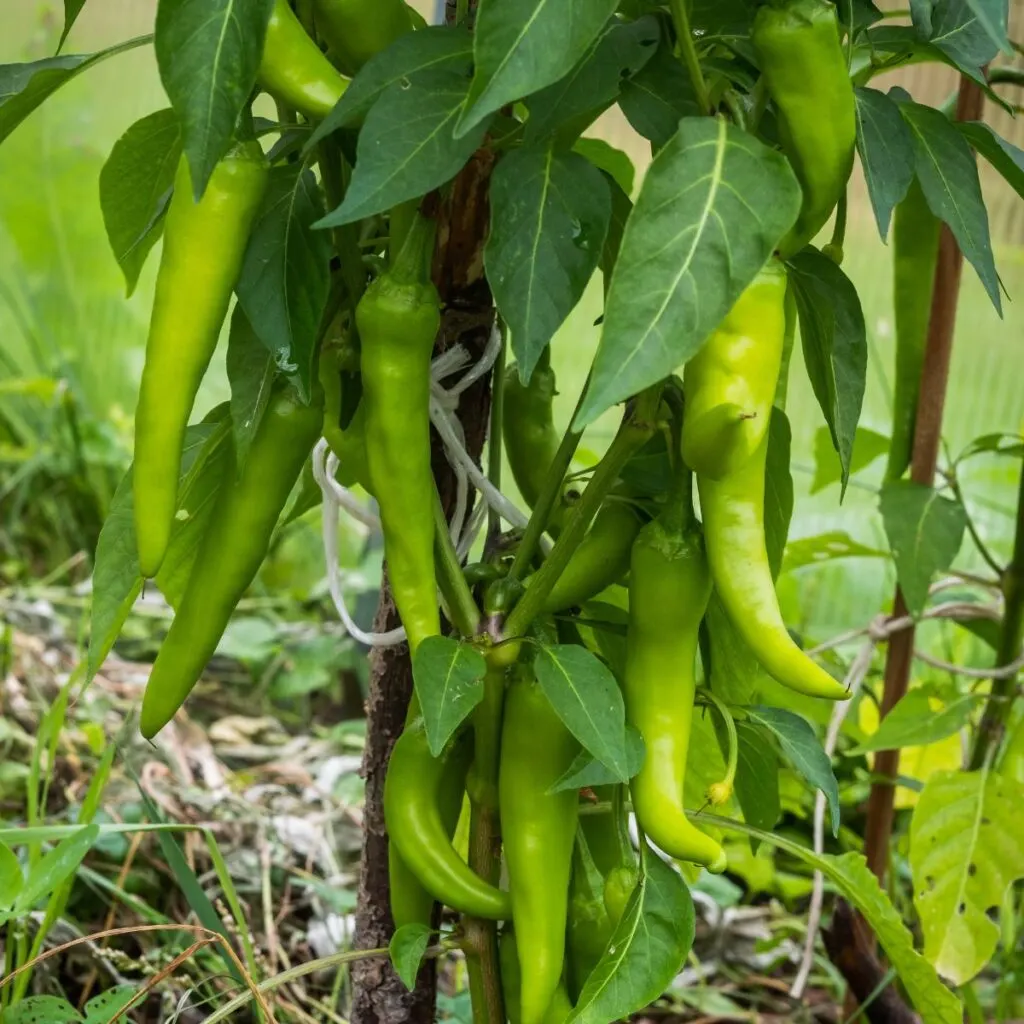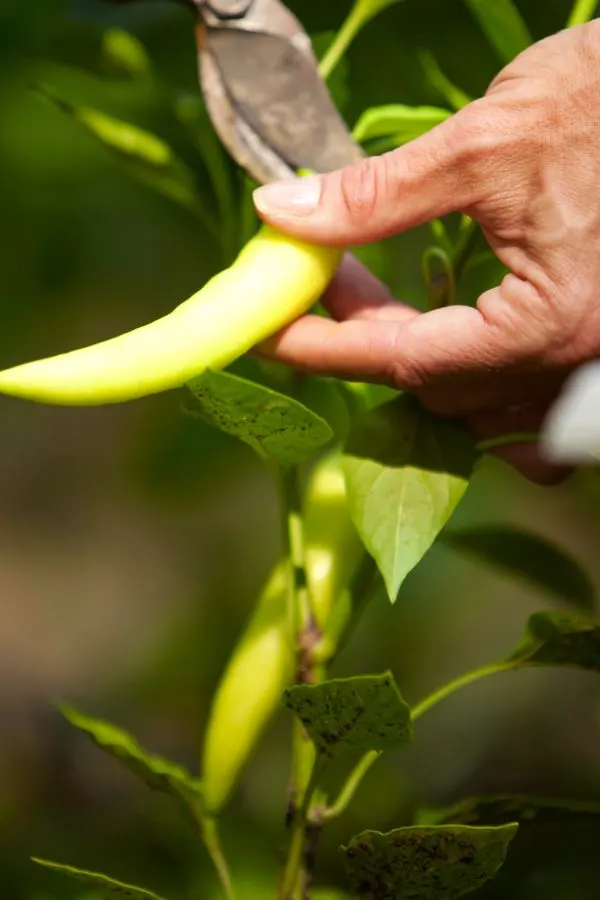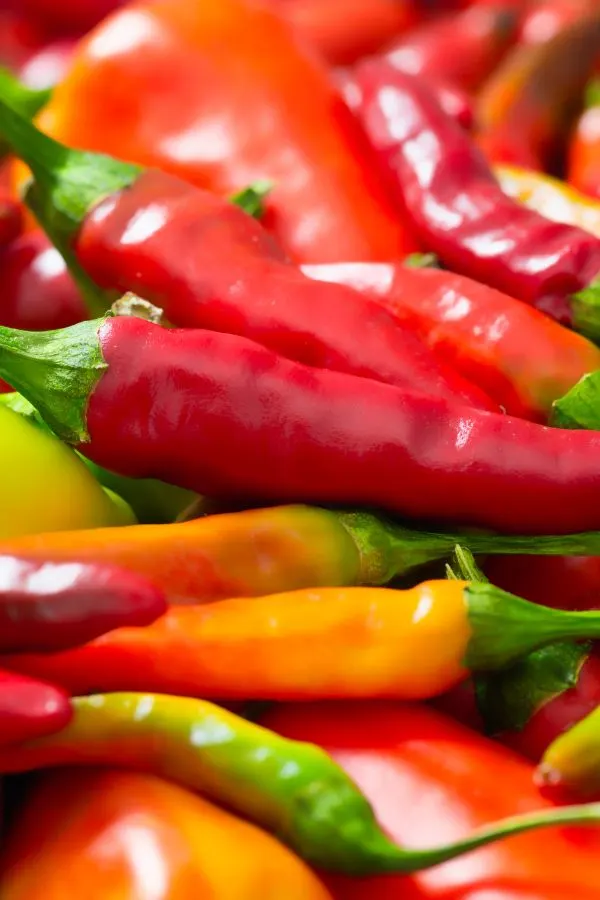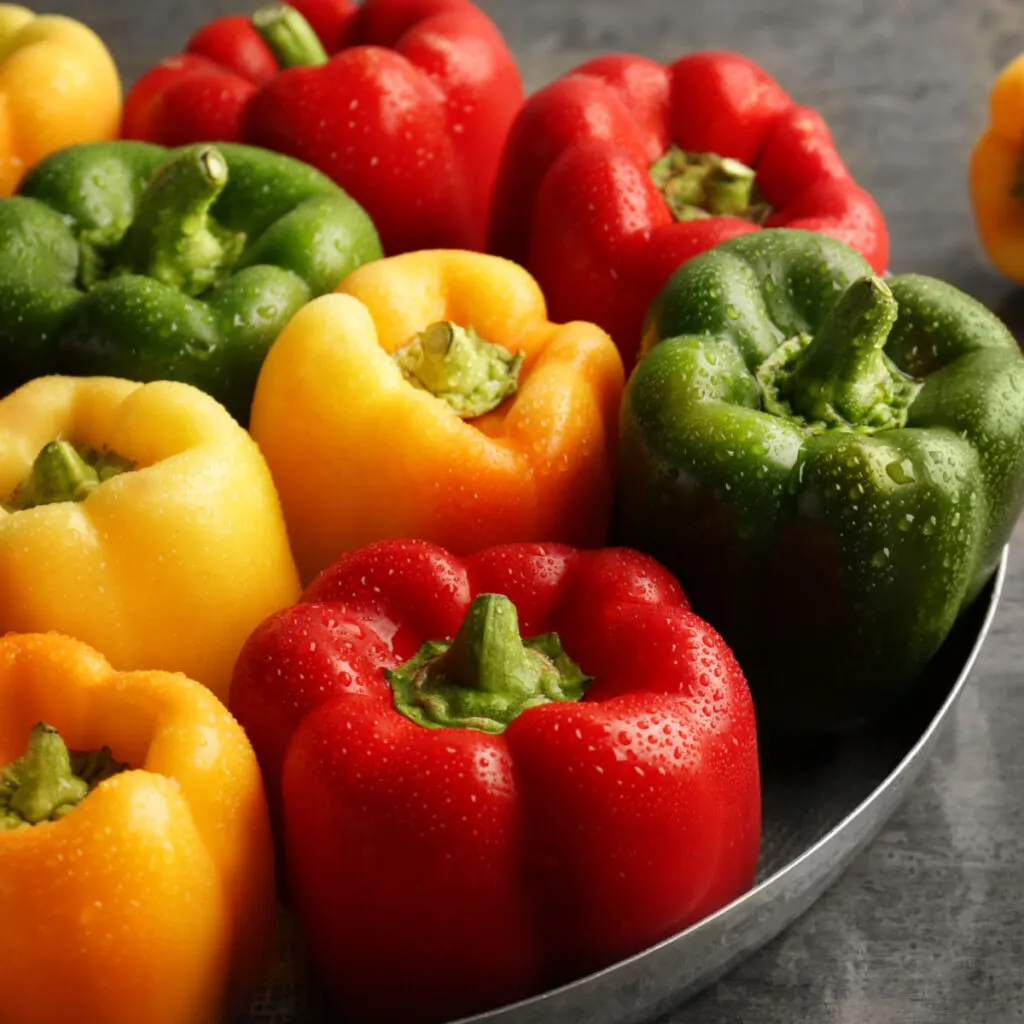Looking for a few tips and tricks to maximize your pepper harvest this year and pick more peppers than ever from your plants?
Peppers are a beloved addition to vegetable gardens, but they can be a bit frustrating when it comes to getting plants to produce a bumper crop. Not only are peppers among some of the last vegetable crops in the garden to start producing, they also often seem to lag behind other plants when it comes to early season growth.
One thing is for sure, peppers need warm soil and warm weather to truly hit their stride. Because of that, they do take a bit longer to start setting and ripening their fruit. But once they do, there are a few key secrets to getting your plants to produce better than ever – and for longer than ever!

How To Get More Peppers From Your Plants
When it comes to getting a bigger harvest of peppers, the saying “the more you pick the more you get” couldn’t be more true. Especially when it comes to picking the first of your peppers off the plant. And that is even before they are ripe!
Picking Off Immature Early Fruit
Ever notice how the first peppers that form on your plants take forever to ripen? The very first peppers take a tremendous amount of energy to produce and turn. This is because the plant is still growing and maturing, and simply doesn’t have enough strength and power to do all at once.
Because of this, removing those first peppers can actually help the plant produce more peppers later on. It is amazing how by simply picking off the first five to ten peppers can help the plant really power up to produce more peppers that ripen far faster than the first fruits to form.
But beyond picking off the early peppers, it is also important to pick of mature peppers that form as soon as possible for the rest of summer. And harvesting often helps for three very important reasons!

3 Reasons To Pick Your Pepper Plants Regularly
- Preventing Stress To Your Pepper Plants
Allowing too many peppers to remain on the plant puts your plants under a lot of stress. Plants with too many peppers struggle to allocate resources effectively. This can lead to smaller and less flavorful fruits – and to the peppers taking far longer to ripen on a consistent basis.
- Preventing Damage To Your Pepper Plants
The more peppers that remain on your plant at one time, the more chance there will be of the branches bending and breaking under the weight of the fruit. Regular picking can help keep the overall weight down, and the likelihood of your plants toppling over during a storm or simply from being too heavy.
In addition, the longer a ripe pepper stays on the plant, the more likely pests will attack it. Insects and animals are drawn to mature fruit. The are easy to eat and ooze with flavor and juice. By picking regularly, you eliminate the risk of having pests find and destroy all of your harvest.
- Preventing Fruit Overload
Pepper plants are programmed to produce more fruit as a response to regular harvesting. When you pick peppers, the plant interprets it as a signal to continue producing more. Hence, the more you pick, the more blooms it will continue to produce.

Picking Often – How To Get More Peppers From Your Plants
Get into the habit of checking your pepper plants daily during the peak harvesting season. Look for mature peppers that have reached their desired size and color and harvest immediately.
When picking peppers. always use clean, sharp pruning shears or scissors to snip off the peppers. Avoid twisting or pulling the fruit away from the plant. Not only will this prevent unnecessary damage to your peppers, it more importantly protects the remaining branches, blooms and peppers from damage.
Last, be sure to remove any overripe or damaged peppers promptly. Old and/or damaged fruit uses a lot of energy from the plant as it tries to heal or help the old fruit. By simply taking them off, that energy can then go to producing new blooms.
Keeping Your Peppers Powered Up – How To Get More Peppers From Your Plants
In addition to keeping your plants picked regularly, providing them with additional nutrients and water are the other two major keys to a bigger and better harvest.
Peppers require a well-balanced diet to thrive and produce abundant fruits. And understanding those nutrient requirements is key to getting more peppers from your plants. How To Get Pepper Plants Growing Fast – 3 Simple Tips To Energize Your Pepper Plants!

The primary nutrients peppers need are nitrogen, phosphorus, and potassium. This is listed as N-P-K on fertilizer labels with the (N) standing for nitrogen, the (P) of phosphorous and the (K) for potassium.
During the early stages of growth, peppers need a fertilizer with a slightly higher nitrogen content. Nitrogen helps to promote vigorous leaf and stem growth. Hearty leaves and stems are what help to create a strong plant that can set the stage for the plants to bear peppers later.
However, as your pepper plants transition to the flowering and fruiting stage, they need a fertilizer with higher phosphorus and potassium content (the second and third numbers in the N-P-K ratio). These nutrients are the main power to support flower and fruit development.
Using A Liquid Fertilizer- Get More Peppers From Your Plants
Although you can power your peppers with granular fertilizer, in the summer, liquid is the best option to supply nutrients fast for blooms and fruiting.
Select a high quality water soluble fertilizer that has more phosphorous and potassium. Fertilize plants every seven to ten days at about half of the recommended dose. This lighter but more regular dose will keep the plant strong without overpowering it. Too much power can lead to all leaf and stem growth – and little to no fruit.

A product like Jack’s Tomato Feed is excellent for peppers as well. It has a 12-15-30 N-P-K ratio that can help power more peppers all summer long. Product Affiliate Link: Jack Tomato Feed Liquid Fertilizer
Additional Tips for Getting More Peppers From Your Pepper Plants
Consistent watering is also key to getting more peppers from your plants. Inconsistent watering will lead to blossom drop, reducing potential fruit production.
Pepper plants need 1 to 1.5 inches of water per week for good production. When hand watering, water deeply to make sure the moisture goes far down in the soil. It is better to water every few days deeply than every day with shallow watering. Shallow watering leads to shallow roots that dry out quickly.
Always be sure to keep a thick layer of organic mulch around the base of the plants. Mulch helps retain moisture, regulate soil temperature, and slowly releases energy as it breaks down. A four to six inch layer of mulch is best for protecting plants.
Consider using stakes or cages to support pepper plants as they bear more peppers. Proper support structures help prevent branches from breaking and help air circulation, reducing the risk of disease.
Here is to picking often and fertilizing and watering your plants for success. And to picking more peppers than ever from your plants this summer!
Follow Our Facebook Page For Even More Great Tips! Simple Garden Life Facebook Page
Simple Garden Life is a website dedicated to keeping gardening fun, simple and enjoyable! We publish two new articles each week along with a new garden podcast episode every two weeks. This article may contain affiliate links.
